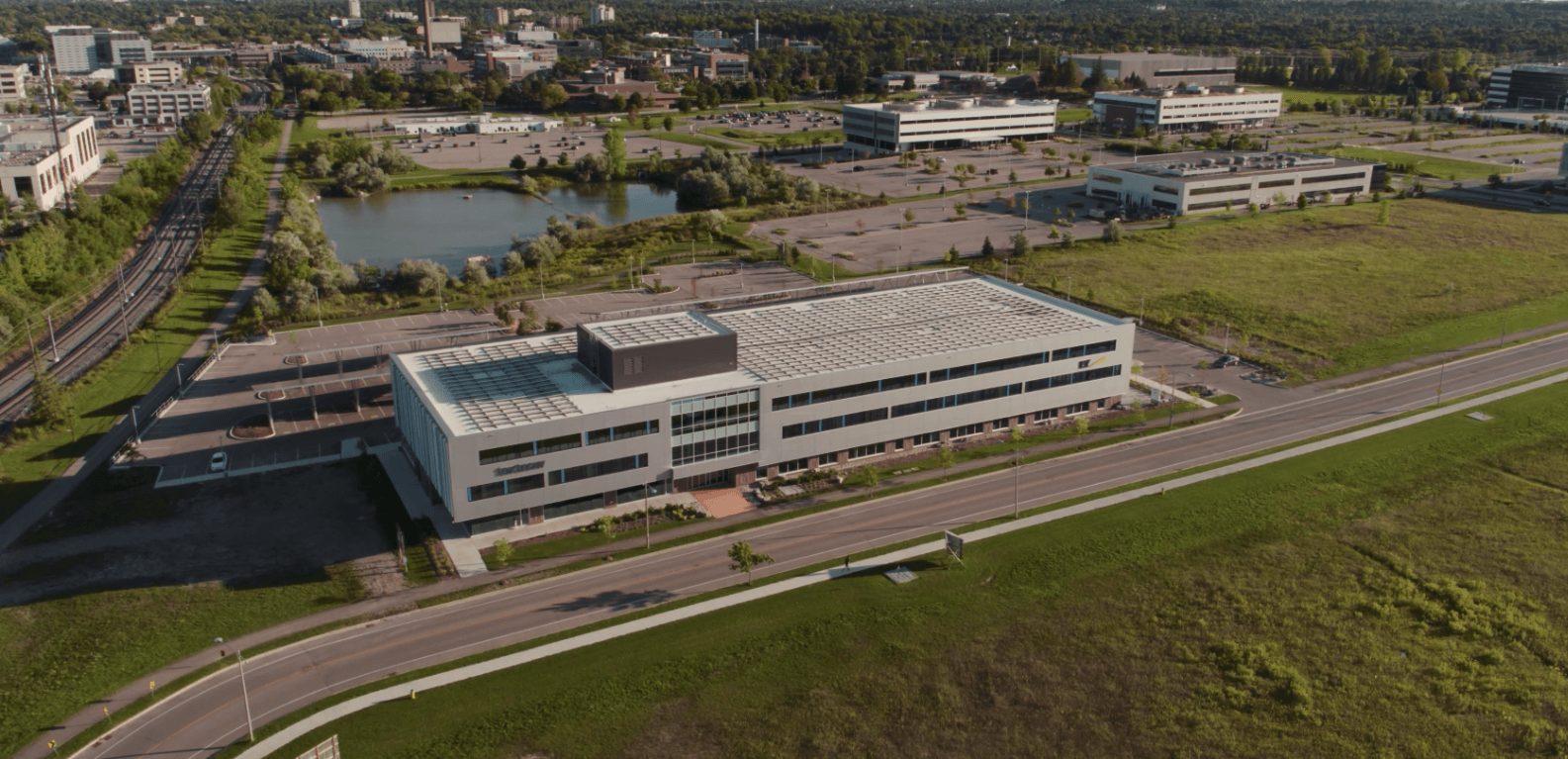Accelerator Centre welcomes 23 startups into the new UN Sustainable Development Cohort of AC:Studio
By: The Accelerator Centre Selected startups will receive up to $100,000 in seed funding and work with the AC and…

If there’s a silver lining to the COVID-19 pandemic, it’s in the multitude of ways our businesses and teams have worked together to keep employees and customers safe. In March, companies across Canada quickly pivoted to work from home. This took enormous effort from human resources to information technology–and every team in between.
With the introduction of Phase 3 of Ontario’s reopening plan, tenants in the David Johnston Research + Technology Park are starting to have some of their teams return to the office. “I think people want to come back to that. But any office environment is going to have challenges,” said Andrea Loveridge, Senior Human Resources Business Partner at SAP. We spoke in detail with Loveridge earlier this summer about SAP’s return to work plan. While making their plans, getting input from their team was the first step.

Like SAP, NAVBLUE is also listening first when planning their return to work. “Before coming up with any back to the office guidelines, it was very important for us to gauge the readiness of staff to return,” said Sean Doherty, Chief Financial Officer at NAVBLUE.
Doherty and the NAVBLUE team are also understanding of their employee’s family situations when planning the return to work. “We determined almost half were unable to return due to family or health constraints,” added Doherty. “Knowing this let us plan accordingly.”
The NAVBLUE office is located in the Accelerator Centre building in R+T Park. They’re implementing physical distancing protocols to help their team navigate the office. “We’re arranging a seating plan, denoting traffic flow directions, limiting meeting room usage – we’re even using a measuring stick for some spaces to ensure we keep everyone safe,” Doherty said.
RELATED: eleven-x IoT Solutions Supporting Companies’ Return to Office After COVID-19
Being located within the Accelerator Centre building lets you be part of a vibrant community of startups and scale-ups. It also means you’re sharing space. Managing the return to work for multiple tenants involves clear messaging. “Communication has been one of our key priorities since going virtual,” said Olivia Rogalla, Manager, Operations and Administration at the Accelerator Centre. “It’s a means of engaging and maintaining a sense of the Accelerator Centre community.”
Rogalla and the Accelerator Centre team understand that returning to the workplace can be daunting and stressful for employees. Continuous communication with their clients and staff has been a key to helping them create their plan. “We’ve also been providing opportunities for ongoing feedback to ensure that we are responding to the needs of our staff and clients,” added Rogalla.

This emphasis on clear and consistent communications is echoed by R+T Park anchor tenant EY. “Given the inherent uncertainty of COVID-19 providing our staff with clear, consistent, transparent and timely communication on a variety of workplace matters, including a return to the physical office, has been crucial,” said Tim Rollins, Office Managing Partner. To this end, EY introduced a weekly office virtual team chats to not only provide updates, but also for activities like celebrating birthdays, personal and work related milestones / achievements, and to answer any questions staff may have to foster team belonging and strength.
Taking recommendations and guidance from Public Health has also been a key part of R+T Park tenants return to work planning. As with most businesses, the Accelerator Centre is taking a phased approach when bringing staff and clients back into the space. “Our plan is intended to be fluid as things change,” Rogalla said. “A phased approach is also beneficial should a regression of phases be necessary as the workforce will be familiar with what to expect from earlier phases and how that might impact them.”
Rollins notes fluid and flexible planning has been a crucial focus for EY as well. “A month or so into working from home, we recognized there were a number of staff who wanted the flexibility to both work from home or the office for a variety of personal reasons.” So EY’s strategy became focused on creating options that worked for people facing different circumstances . “We provide our staff with enhanced flexibility to do their work in a manner that is most efficient and effective for them,” said Rollins.

Rogalla, Rollins and Doherty all noted one key thing paramount to their return to work plans – patience. “The space is there for people who would prefer to be in the office, and we are waiting to see how things unfold before we push any harder on people returning,” said Doherty. “People still have the same restrictions, so we aren’t pushing anything.”
Here’s a few things to consider for your space and your staff when designing your organization’s return to work plan.
Traffic flow and security
Meeting rooms and coworking spaces
Lunch and communal areas
Employee Support
Here are a few more resources from our R+T Park tenants and collaborators that are helpful for designing your own return to work plan:
It’s important to recognize that not everyone on your team will feel comfortable returning to the office. Even more important, some staff won’t feel comfortable disclosing that they’re not ready to come back. If you have an anonymous feedback system, let your team know they can use it to share their feelings in a non-judgemental environment.
There are a lot of great reasons to plan a return to the office, and with the right safety protocols, strong communications, and a focus on employee health and well-being, we can make returning safe and productive for everyone.